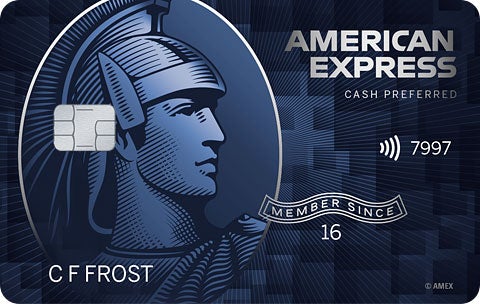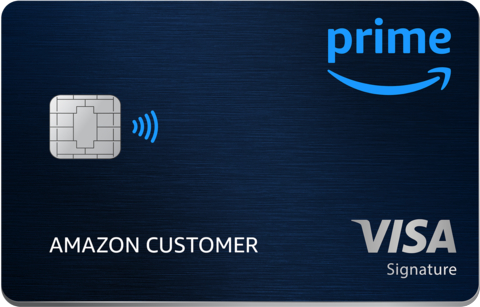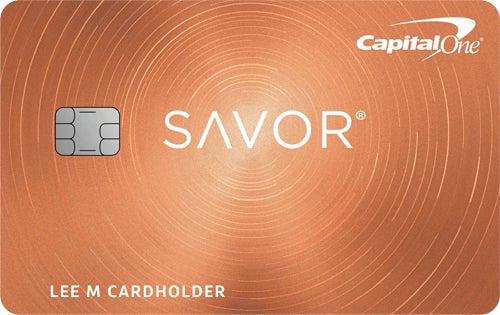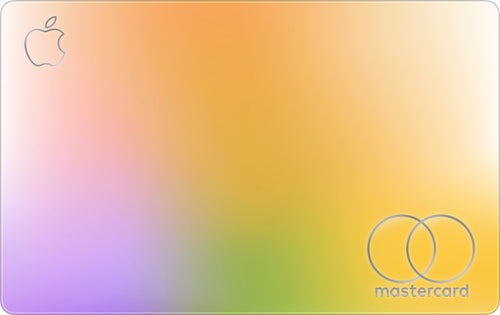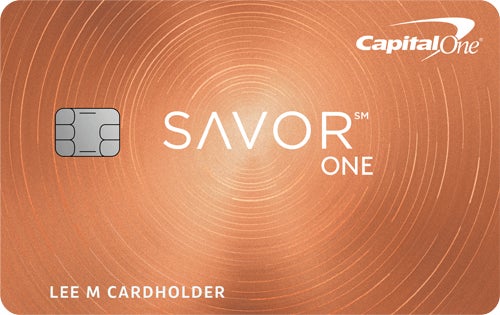Whether you’re hopping on the True Detective train or looking to catch up on this year’s Oscar contenders, there are plenty of shows and movies to watch. Unfortunately (or maybe not, depending on how you look at it), each streaming service has something to watch. That means you most likely have more than one streaming service subscription.
“Signing up for streaming services can quickly add up,” credit expert Lee Huffman said. “Many consumers have multiple services that rival the cost of cable TV. It’s easy to forget about these subscriptions and end up [paying for] services that you no longer use.”
If you do have multiple streaming services, these credit cards can put a little back in your pocket while you binge-watch.
The Blue Cash Preferred* is the most rewarding credit card when it comes to streaming services. It does have an annual fee, but it’s quickly forgotten thanks to how fast rewards can accumulate. While its primary draw is the return it provides for essential spending at U.S. supermarkets and U.S. gas stations -- you know, where you can fuel up with snacks for nights in -- it also offers 6% cash back on select U.S. streaming subscriptions.
You can learn more in our Blue Cash Preferred review.
- Intro Balance Transfer APR
- 0% on balance transfers for 12 months
- Intro Purchase APR
- 0% on purchases for 12 months
- Regular APR
- 19.24% – 29.99% Variable
- Balance Transfer Fee
- Either $5 or 3% of the amount of each transfer, whichever is greater.
The Blue Cash Preferred* is the most rewarding credit card when it comes to streaming services. It does have an annual fee, but it’s quickly forgotten thanks to how fast rewards can accumulate. While its primary draw is the return it provides for essential spending at U.S. supermarkets and U.S. gas stations -- you know, where you can fuel up with snacks for nights in -- it also offers 6% cash back on select U.S. streaming subscriptions.
You can learn more in our Blue Cash Preferred review.
- Intro Balance Transfer APR
- 0% on balance transfers for 12 months
- Intro Purchase APR
- 0% on purchases for 12 months
- Regular APR
- 19.24% – 29.99% Variable
- Balance Transfer Fee
- Either $5 or 3% of the amount of each transfer, whichever is greater.
The Prime Visa is Amazon’s flagship credit card. It provides rewards for all things Amazon, including the retail giant’s streaming services. While it technically doesn’t have an annual fee, it does require a Prime membership, which costs $139 annually or $14.99 a month.
Similar to the Apple Card, Amazon also features Amazon Prime Video Channels that let you watch content with subscriptions from other brands like Max, Paramount Plus, Starz and others. If you subscribe to those channels with your Prime Visa card, you’ll earn a high rewards rate for those subscriptions too.
You can learn more in our Prime Visa review.
- Intro Balance Transfer APR
- N/A
- Intro Purchase APR
- N/A
- Regular APR
- 19.49% – 27.49% Variable
- Balance Transfer Fee
- Either $5 or 4% of the amount of each transfer, whichever is greater.
The Prime Visa is Amazon’s flagship credit card. It provides rewards for all things Amazon, including the retail giant’s streaming services. While it technically doesn’t have an annual fee, it does require a Prime membership, which costs $139 annually or $14.99 a month.
Similar to the Apple Card, Amazon also features Amazon Prime Video Channels that let you watch content with subscriptions from other brands like Max, Paramount Plus, Starz and others. If you subscribe to those channels with your Prime Visa card, you’ll earn a high rewards rate for those subscriptions too.
You can learn more in our Prime Visa review.
- Intro Balance Transfer APR
- N/A
- Intro Purchase APR
- N/A
- Regular APR
- 19.49% – 27.49% Variable
- Balance Transfer Fee
- Either $5 or 4% of the amount of each transfer, whichever is greater.
U.S. Bank Cash+® Visa Signature® Card
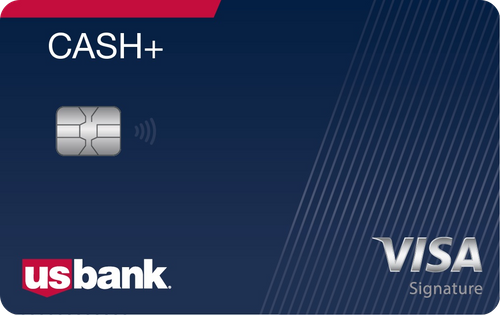
The U.S. Bank Cash+ gives cardholders a choice of which purchases they’d like to earn the most rewards for. You can choose two categories to earn 5% cash back (on the first $2,000 spent in combined purchases each quarter), one of which is TV, internet and streaming. You can even choose home utilities for your other category to earn some rewards for your other monthly bills. Its static rewards cover essentials like gas and groceries, so it’s a pretty useful offering.
Though it does have a spending cap for the 5% cash-back category, its other categories don’t.
- Intro Balance Transfer APR
- 0% intro APR Intro APR on balance transfers for the first 15 billing cycles.
- Intro Purchase APR
- 0% intro APR Intro APR on purchases for the first 15 billing cycles.
- Regular APR
- 19.74% – 29.74% (Variable)
- Balance Transfer Fee
- Either 3% of the amount of each transfer or $5 minimum, whichever is greater.
The U.S. Bank Cash+ gives cardholders a choice of which purchases they’d like to earn the most rewards for. You can choose two categories to earn 5% cash back (on the first $2,000 spent in combined purchases each quarter), one of which is TV, internet and streaming. You can even choose home utilities for your other category to earn some rewards for your other monthly bills. Its static rewards cover essentials like gas and groceries, so it’s a pretty useful offering.
Though it does have a spending cap for the 5% cash-back category, its other categories don’t.
- Intro Balance Transfer APR
- 0% intro APR Intro APR on balance transfers for the first 15 billing cycles.
- Intro Purchase APR
- 0% intro APR Intro APR on purchases for the first 15 billing cycles.
- Regular APR
- 19.74% – 29.74% (Variable)
- Balance Transfer Fee
- Either 3% of the amount of each transfer or $5 minimum, whichever is greater.
The Capital One Savor* -- in exchange for a $95 annual fee -- offers a solid return on your entertainment purchases, including streaming services. There’s no limit to the rewards you can earn, and it’s good for purchases beyond streaming as well. Just be sure it fits into your spending habits. You’ll want to earn enough rewards from your normal spending to cover its fee. Otherwise, consider the no-annual-fee version.
- Intro Balance Transfer APR
- N/A
- Intro Purchase APR
- N/A
- Regular APR
- 19.99% – 29.99% Variable
- Balance Transfer Fee
- None for balances transferred at the Transfer APR.
The Capital One Savor* -- in exchange for a $95 annual fee -- offers a solid return on your entertainment purchases, including streaming services. There’s no limit to the rewards you can earn, and it’s good for purchases beyond streaming as well. Just be sure it fits into your spending habits. You’ll want to earn enough rewards from your normal spending to cover its fee. Otherwise, consider the no-annual-fee version.
- Intro Balance Transfer APR
- N/A
- Intro Purchase APR
- N/A
- Regular APR
- 19.99% – 29.99% Variable
- Balance Transfer Fee
- None for balances transferred at the Transfer APR.
If Ted Lasso and Monarch are on your must-watch list, you might consider the Apple Card*.
Though this card doesn’t feature a “streaming rewards” category, it does offer rewards for all things Apple, including Apple TV and Apple Music. You can also take advantage of Apple TV Channels, which give access to a number of other streaming services, like Max (formerly HBO), Starz and Showtime, among others.
You can learn more in our Apple Card review.
- Intro Balance Transfer APR
- N/A
- Intro Purchase APR
- N/A
- Regular APR
- 19.24% to 29.49% Variable
- Balance Transfer Fee
- N/A
If Ted Lasso and Monarch are on your must-watch list, you might consider the Apple Card*.
Though this card doesn’t feature a “streaming rewards” category, it does offer rewards for all things Apple, including Apple TV and Apple Music. You can also take advantage of Apple TV Channels, which give access to a number of other streaming services, like Max (formerly HBO), Starz and Showtime, among others.
You can learn more in our Apple Card review.
- Intro Balance Transfer APR
- N/A
- Intro Purchase APR
- N/A
- Regular APR
- 19.24% to 29.49% Variable
- Balance Transfer Fee
- N/A
The Capital One SavorOne* earns fewer rewards than the Savor but it doesn’t charge an annual fee. It provides a surprisingly high reward rate and covers a number of popular expenses -- including streaming services -- for a card without an annual fee. It even pairs well with most other credit cards.
You’ll also earn rewards for any snacks you buy at eligible grocery stores when preparing to watch your favorite shows.
You can learn more in our Capital One SavorOne review.
- Intro Balance Transfer APR
- 0% intro on balance transfers for 15 months
- Intro Purchase APR
- 0% intro on purchases for 15 months
- Regular APR
- 19.99% – 29.99% (Variable)
- Balance Transfer Fee
- 3% for the first 15 months; 4% at a promotional APR that Capital One may offer you at any other time
The Capital One SavorOne* earns fewer rewards than the Savor but it doesn’t charge an annual fee. It provides a surprisingly high reward rate and covers a number of popular expenses -- including streaming services -- for a card without an annual fee. It even pairs well with most other credit cards.
You’ll also earn rewards for any snacks you buy at eligible grocery stores when preparing to watch your favorite shows.
You can learn more in our Capital One SavorOne review.
- Intro Balance Transfer APR
- 0% intro on balance transfers for 15 months
- Intro Purchase APR
- 0% intro on purchases for 15 months
- Regular APR
- 19.99% – 29.99% (Variable)
- Balance Transfer Fee
- 3% for the first 15 months; 4% at a promotional APR that Capital One may offer you at any other time
What is a credit card for streaming services?
Technically, there are no streaming credit cards (yet). Instead, these are reward credit cards that provide cash back or points for paying a streaming membership. Because membership costs are fairly low, the return on spend won’t be very high. So it’s important to consider which other purchases the card earns rewards for, too.
Pros
Earn rewards on a reoccuring subscription
Build credit for paying your bill on time
Cons
Streaming rewards won’t be very high
If the card has an annual fee, you’ll have to pay another reoccurring fee
How to choose the best credit card for your streaming subscriptions
The best credit card for streaming subscriptions will be the card that earns the most rewards. Streaming subscriptions are relatively inexpensive (unless you have several), so the return won’t be high. That means it’s important to also match the card’s other reward categories with your spending.
Most of the cards featured here earn good rewards for regular purchases like gas, dining and groceries, making them good options for a well-rounded rewards card.
If the card carries an annual fee, check to see if your spending habits will earn enough rewards to cover it. Otherwise, the card’s fee will reduce any rewards you earn.
It’s also important to make sure the card offers rewards for the streaming services you have (and use). It’s a safe bet that the majority of them are covered, but outliers like Shudder aren’t always included. Most cards tell you in the card terms which subscriptions are covered.
How to get the most out of your credit card
The first thing you should do is connect your new credit card to your subscription services. You’ll earn rewards only if you’re using the card to pay for them. From there, you can also use the card to earn rewards in any other categories, and if there’s a welcome offer, try to earn it through your normal spending. If you overspend to reach the bonus, it’ll eat into its value.
Is a streaming credit card right for you?
If you have a number of streaming services like Spotify, Disney Plus, Netflix and Max, membership costs can add up quickly. A credit card that provides rewards for streaming services can put some money back into your bank account. Just keep in mind that the rewards won’t be staggering. While a 6% cash-back rate is high, on a streaming bill of $30, it will net you only $1.80 in rewards each month.
It’s important to match the card’s other rewards with your spending habits too, as that’ll be where most of the value comes from. Also, be aware that most of the cards on this list require good to excellent credit scores. If you need to improve your credit to qualify, consider a credit card for average credit first.
Alternatives to streaming credit cards
If you’re looking to earn rewards on more than just streaming services, you could consider adding a flat-rate rewards credit card to your wallet instead. These credit cards provide rewards for everything you spend money on, regardless of what it’s for.
How to apply for a streaming credit card
Once you’ve picked the card you like, follow these steps to apply:
- Follow the link to the credit card issuer’s application.
- Fill out all the personal and financial information required, including your Social Security number, rent or mortgage payment, income, address and phone number.
- Wait for the issuer’s decision -- in most cases, this will be instant unless the issuer requests additional information.
- Use your card responsibly and pay your bill in full and on time to avoid any interest charges or damaged credit.
FAQs
Most popular streaming services qualify for bonus rewards from your credit card. But to be sure, you can check your card terms for a list of eligible purchases or contact customer service. For the cards on this list, eligible streaming services include:
- Hulu
- Disney Plus
- Max
- Netflix
- Peacock
- Paramount Plus
- Amazon Video
- Amazon Music
- Spotify
- Pandora
- Apple Music
The best credit card for streaming services is the Blue Cash Preferred from American Express. It earns an unlimited 6% cash back for select U.S. streaming services while also offering one of the highest reward rates at U.S. supermarkets and U.S. gas stations. While it has an annual fee, it includes annual credits for Disney bundles and Equinox+, which can help to cover the cost.
Terms apply to American Express benefits and offers. Enrollment may be required for select American Express benefits and offers. Visit americanexpress.com to learn more.
*All information about the Blue Cash Preferred Card from American Express, Apple Card, Capital One Savor Cash Rewards and Capital One SavorOne Cash Rewards Credit Card has been collected independently by CNET and hasn’t been reviewed by the issuer.
For rates and fees of the Blue Cash Preferred Card from American Express, click here.
Other credit cards we researched
- Citi Double Cash® Card
- Chase Sapphire Preferred® Card
- The Platinum Card® from American Express
- Citi Custom Cash® Card
Recommended Articles
Our methodology
CNET reviews credit cards by exhaustively comparing them across set criteria developed for each major category, including cash back, welcome bonus, travel rewards and balance transfer. We take into consideration the typical spending behavior of a range of consumer profiles -- with the understanding that everyone’s financial situation is different -- and the designated function of a card.
The editorial content on this page is based solely on objective, independent assessments by our writers and is not influenced by advertising or partnerships. It has not been provided or commissioned by any third party. However, we may receive compensation when you click on links to products or services offered by our partners.



